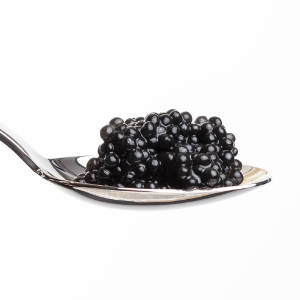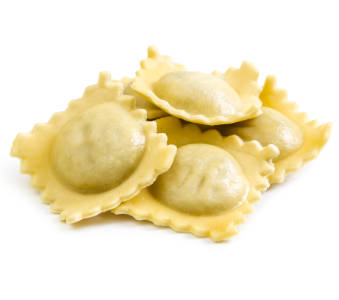Miscellaneous Category

Includes thickeners and food wrappers
ossetra caviar
In recent years, over-fishing in the Caspian Sea has greatly depleted sturgeon populations. Please consider using caviar and roe from more abundant species until the Caspian Sea sturgeon populations can recover. Ossetra caviar is brown and more strongly flavored than beluga caviar. Don't confuse ordinary ossetra with the rare and expensive golden ossetra = imperial caviar. If substituting an inferior caviar, consider perking it up with a splash of fresh lemon juice. For substitutions for caviar in general, click here.
Learn morepaddlefish roe
Paddlefish swim in Southern rivers and they're relatives of sturgeons--the fish that produce the world's most expensive and exquisite caviars. Paddlefish roe is very similar to sevruga caviar, only it's cheaper. Since Caspian Sea sturgeon are rapidly becoming depleted from over-fishing, many people are turning to paddlefish roe as a substitute for caviar.
Learn moreparchment paper
This is a heavy, silicone-coated paper that's used to line pans so that candies and baked goods won't stick. It's an expensive alternative to waxed paper, but it's less sticky, so it's a good choice if you're making gooey items. Parchment paper is also wrapped around foods to be cooked en papillote, or formed into cones for cake decorating. Specialty cooking stores and larger supermarkets often carry rolls or sheets of it. Paper grocery bags are sometimes recommended as a substitute for parchment paper, but it's not advisable to use them. Grocery bags will ignite at 450 degrees, and that they may have been treated with unsafe chemicals.
Learn morepectin
In order to make preserves like jams and jellies, you normally cook together fruit, acid, sugar, and pectin, a substance found in certain fruits that gels when heated. Some fruits -- like quinces, gooseberries, tart apples, and sour plums -- contain enough natural pectin that they'll thicken all by themselves into preserves. Others, like cherries and some berries, need an extra boost to firm up. Jam recipes for pectin-deficient fruit normally call for liquid or powdered pectin, which you can find among the baking supplies in most supermarkets. The recipes usually specify what brand of pectin to use, and it's not a good idea to substitute one brand for another, since they have different formulas. Some brands (like Sure Jell and Certo) need acid and sugar to set, some (like Sure Jell for Low Sugar Recipes) need acid and just a little sugar to set, some (like Pomona's Universal Pectin® or Mrs. Wages Lite Home Jell Fruit Pectin®) don't need any sugar to set. Liquid pectin contains sulfite, which can cause an allergic reaction in people with sulfite sensitivites, but powdered pectin does not.
Learn moreplastic wrap
Plastic wrap is terrific for covering foods to be stored in the refrigerator or cooked in the microwave. It clings especially well to glass, ceramic, and china dishes. You can also use it to wrap foods for short-term freezer storage, though you should use aluminum foil if you're storing something in the freezer for a long time since foil is better at preventing moisture loss.
Learn morepollock roe
Asian markets sell this inexpensive roe in wooden boxes. It's often baked and served on rice.
Learn morepotash
This is sometimes used to make gingerbread and honey cake. Look for it in German markets.
Learn morepotassium bicarbonate
This is used as a substitute for baking soda by people on sodium-restricted diets. Look for it in pharmacies.
Learn morepotato starch
This gluten-free starch is used to thicken soups and gravies. Its main advantage over other starch thickeners is that it's a permitted ingredient for Passover, unlike cornstarch and other grain-based foods. Liquids thickened with potato starch should never be boiled. Supermarkets often stock it among the Kosher products.
Learn morepotsticker wrappers
These small, thick wrappers are stuffed with meat fillings, and then pan-fried and steamed. While assembling the potstickers, keep the stack of wrappers moist by covering them with a damp towel. You can seal the potstickers with a "glue" made with cornstarch and water. Look for stacks of them wrapped in plastic in the refrigerator cases of Asian markets. They freeze well.
Learn morerice paper
These thin, fragile sheets are used to make spring rolls, but they also make good all-purpose wrappers, baking pan liners, and even lasagne noodles. The sheets are brittle, so you need to moisten them with water before wrapping foods in them. Keep them moist while you work with them by covering the stack with a damp towel. Rice paper doesn't need to be cooked, but it's sturdy enough to be steamed or deep-fried. Look for it in Asian markets. It can be stored in a cool, dark place for many months.
Learn moreroux
This is a thickener that's made from equal weights of flour and a fat, like butter or meat drippings. It's especially good for thickening rich, hearty stews and gravies. To make it, heat the fat in a pan, then gradually whisk in the flour. Cook the mixture, stirring constantly, for at least several minutes, then gradually whisk in the hot liquid you're trying to thicken. You must then cook the sauce for at least 30 minutes to prevent it from acquiring a grainy texture and a starchy, floury taste. Some cooks make large batches of roux, and store it in the refrigerator or freezer.
Learn moreSago starch
This flour is made from the inner pulp of the sago palm. It's often used to make pudding, but it can also serve as an all-purpose thickener. Look for it in Asian markets.
Learn moresahlab
This is made from orchid tubers and has a pleasant, flowery smell. Look for it in Middle Eastern markets.
Learn moresake lees
This is what's left over after sake has been pressed from the fermented rice mash. The Japanese marinate fish and meats in it to improve flavor and texture. It's available either in doughy sheets, or as a thick mush.
Learn moresausage casings
These are traditionally made from intestines, but synthetic casings are now more common. You can order them online, or prevail upon a friendly neighborhood butcher.
Learn morescallop roe
This coral-colored roe is expensive and hard to find, but it has a wonderful, delicate flavor. The roe is usually both sold and served with the scallop that produced it.
Learn moresea moss
Sea moss is a type of frilly seaweed that grows in tidepools. Sea moss grows in a variety of colors and It can be eaten on its own or used as a thickener. It is often sold as a gel. Many people believe sea moss has medicinal qualities.
Learn moresevruga caviar
In recent years, over-fishing in the Caspian Sea has greatly depleted sturgeon populations. Please consider using caviar and roe from more abundant species until the Caspian Sea sturgeon populations can recover. Greenish-gray sevruga has the smallest eggs and strongest flavor of all the caviars. Because of this, it's cheaper than beluga or ossetra, but still quite good. If substituting an inferior caviar, consider perking it up with a splash of fresh lemon juice. For substitutions for caviar in general, click here.
Learn moreshad roe
You can buy lobes of this roe fresh in the springtime, or in cans during the rest of the year. Canned shad roe is good, but not quite as good as fresh.
Learn more







































































































































































































































































































































































